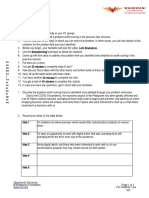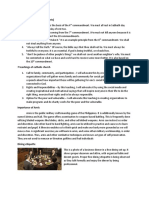0% found this document useful (0 votes)
35 views12 pagesADBMS Lab Manual-1
The Advanced Database Management System (ADBMS) Lab Manual outlines objectives and outcomes for students, focusing on skills in database design, SQL commands, and professional development. It includes practical labs on ER modeling, SQL basics, stored procedures, joins, views, and normalization. The manual emphasizes the importance of ethical, social, and legal considerations in database applications.
Uploaded by
Syed NafeesuddinCopyright
© © All Rights Reserved
We take content rights seriously. If you suspect this is your content, claim it here.
Available Formats
Download as DOCX, PDF, TXT or read online on Scribd
0% found this document useful (0 votes)
35 views12 pagesADBMS Lab Manual-1
The Advanced Database Management System (ADBMS) Lab Manual outlines objectives and outcomes for students, focusing on skills in database design, SQL commands, and professional development. It includes practical labs on ER modeling, SQL basics, stored procedures, joins, views, and normalization. The manual emphasizes the importance of ethical, social, and legal considerations in database applications.
Uploaded by
Syed NafeesuddinCopyright
© © All Rights Reserved
We take content rights seriously. If you suspect this is your content, claim it here.
Available Formats
Download as DOCX, PDF, TXT or read online on Scribd
/ 12






















































































